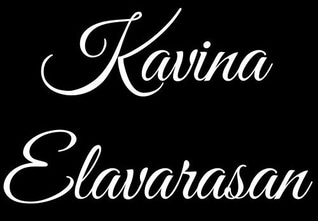The Art of Winning Hearts and Minds at Work
💡 Did you know? 88% of professionals believe poor collaboration leads to project failure. 🔐 Yet the secret to solving this isn’t more meetings or better tools—it’s PERSUASION.


The Toughest Meeting of My Career
In January 2020, as whispers of the COVID-19 pandemic were just starting to surface, I was on a mission to China to salvage a critical project for one of our largest customers. The stakes couldn’t have been higher, an OEM customer known for its exacting standards had threatened to terminate the project.
The day before our crucial customer meeting, I walked into a room filled with leaders from China, India, and Europe. Instead of preparation and problem-solving, I found myself in the middle of what could only be described as a battlefield.
Voices were raised, fingers were pointed, and blame was thrown around liberally. One team accused another of rigid processes that delayed software delivery. The other team shot back, blaming fluid and ever-changing requirements. The conversation spiraled into a blame game, with cultural tensions surfacing and tempers flaring.
At that moment, I realized something critical: if we walked into the customer meeting like this, divided and chaotic, the project would be as good as lost. Someone had to redirect the energy in the room, and it became clear that the responsibility fell to me.
I stood up and said, “This isn’t about what went wrong—it’s about what we’re going to do next. Tomorrow, the customer doesn’t need our excuses; they need our commitment. We owe it to them—and ourselves—to stand united and show that we can deliver.”
The room went quiet. It was as if my words had snapped everyone out of their tunnel vision. Slowly, the conversation shifted. Frustration gave way to understanding, and collaboration replaced conflict. Instead of rehashing past grievances, we focused on what really mattered—crafting a plan to win back the customer’s trust.
The next day, we presented a united front to the customer, along with a clear recovery plan and a renewed commitment to success!
On a lighter note, that win marked the end of my whirlwind mission. I boarded my last flight back to India on January 22, 2020, just as the world was beginning to shut down.
That day, I realized that persuasion isn’t about being the loudest or most logical voice in the room. It’s about creating an emotional and cognitive connection that makes people want to say “YES”
The Persuasion Paradigm: Advanced Strategies
1. Cognitive Framing: Shape Perception
"People don’t see the world as it is; they see it as they are."
Our brains rely on shortcuts to make decisions. As a leader, you can use cognitive framing to guide your team’s perception of a challenge.
Example: Instead of presenting a cost-cutting initiative as a “necessary sacrifice,” reframe it as an “investment in long-term sustainability.”
Pro Tip: Reframe challenges to create optimism and success
2. Emotional Resonance: Lead with Empathy
"Facts tell, but emotions sell."
People are far more likely to be persuaded when they feel a personal connection to the message. Identify emotional triggers such as a desire for security, recognition, or belonging and weave them into your communication.
Example: When proposing a change, acknowledge the fears and uncertainties your team might have, and show how your solution addresses those concerns.
Tap into emotional triggers like security or recognition to inspire action.
3. Strategic Storytelling: Make Data Memorable
"A memorable story can turn abstract concepts into relatable solutions."
Stories are 22 times more likely to be remembered than facts alone. Use storytelling to connect with your audience on a deeper level. A compelling narrative combines data with human experience, turning abstract ideas into something tangible and relatable.
Framework: Craft stories using the “ARC” formula:
- Anecdote: Start with a relatable story.
- Reasoning: Support it with logic or data.
- Call-to-Action: End with a clear next step.
Use the “ARC” formula—Anecdote, Reasoning, Call-to-Action.
4. Decision Architecture: Guide Choices
"Subtle changes in how options are presented can transform decision-making."
Design the choices you present to your team in a way that leads to better outcomes. This is known as choice architecture.
Example: Instead of asking your team, “Do you agree with this initiative?” frame it as, “Which of these two approaches do you feel is the best way forward?”
By reducing decision fatigue, you make it easier for people to commit.
5. Conversational Intelligence: Build Trust
"Persuasion thrives on trust."
Persuasion thrives in environments of trust. Use advanced conversational techniques like speech pacing (matching the tempo of the person you’re speaking with) and contextual alignment (acknowledging their viewpoint before presenting yours) to foster mutual respect.
Mirror speech pacing and acknowledge differing views to foster alignment.
Why Persuasion Matters Now More Than Ever
In a world of rapid change and rising expectations, persuasion is a superpower every leader must cultivate. It’s not about bending people to your will; it’s about creating shared visions, bridging divides, and driving meaningful action.
As you reflect on your leadership journey, consider this: How can you connect with your teams on both a logical and emotional level to create lasting impact?
Remember, the best leaders don’t just Lead—they Persuade, Inspire, and Transform.


